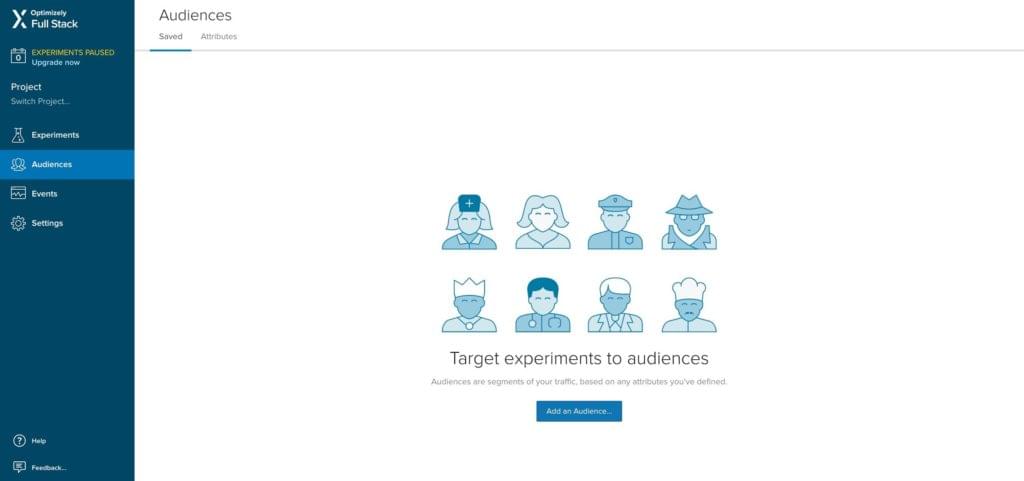Optimizely has grown to be one of the major A/B testing tools. It’s suitable for companies of all sizes — from startups and small businesses to major corporations. Optimizely’s tools and integrations allow anyone to quickly learn more about their audience and experiment with design and content changes non-destructively through A/B testing. With A/B tests you can confirm, for example, which CTA (call to action) leads to the most clicks, or which version of a checkout leads to the most online sales.
Optimizely also integrates with mobile apps and TV apps, meaning that you can analyze metrics and improve conversions on virtually any platform.
It sounds ambitious (and maybe even a little complex), but you can start out small with their simple visual editor, which lets you experiment with fairly simple A/B tests (no code necessary). When you feel you’re getting the hang of Optimizely (it’s actually really easy to use), you can integrate Optimizely more natively using their many SDKs. In this article, I’ll summarize the tools Optimizely offers and identify a suitable scenario for when they could be used.
Since it’s an ambitious tool with a huge offering, let’s break down the features.
What You Need Before Using Optimizely
While there are no official requirements for using Optimizely, you should already have your KPIs established beforehand. A KPI (key performance indicator) is a metric that you’re tracking to measure success — such as the number of user registrations, sales, newsletter signups and so on. In short, what are your website’s goals? Have them noted down.
(If you need some background to website goals, analytics and more, check out our recent articles on using analytics to improve UX, such as our introduction to Google Analytics.)
Your website (or app) should also have a reasonable amount of traffic, so that the data collected is informative enough. I would also recommend a minimum of 1000 visitors over 1–2 days on the page you’d like to optimize, to justify the costs of Optimizely services. If you’re not quite at these levels yet, consider using Google Optimize as a free alternative.
Optimizely offers a standard 30-day free trial for all of their services, so that you can experience the benefits for yourself and learn how to use it like a pro before investing any money. Like I said, to make the most of the 30-day trial, have your KPIs established and experiments thought out beforehand, to make the most of each free day.
Okay, so let’s dive into the features now.
Web Experimentation
Web Experimentation is essentially a visual editor for creating A/B tests on your website. With the editor, you can make content, color and layout ordering changes to create one or more variations of a web page.
Then, using the audience builder, you can target specific segments of your audience based on geolocation, time, gender and more. With these powerful targeting features, you can then test your variations on a very specific audience. The results are fed into a live reporting system, which gives you detailed feedback on all of your variations, to help you identify the one with the highest conversions, which you can then implement permanently.
Changes to code are not required, and your original version is not disturbed.

Web Personalization
Optimizely’s Web Personalization tool is similar to its Web Experimentation tool, but with a focus on A/B testing content rather than visuals, where the aim is to display content that’s relevant and interesting to the audience.
For example, consider the home page of a sportswear store. Visitors with a user persona matching that of a hiker could be shown a mountain-view background with the latest hiking shoes. To take this a step further, you could show hikers in colder locations thermal clothing and a snowy scene. With Optimizely’s exceptional targeting features, the options are endless.
By tailoring content to audiences based on their location, current weather conditions and more, your business can maximize sales and stand out from the competition by giving users exactly what they’re looking for.
The post Optimizely A/B Testing Tools: Knowing Which is Right for You appeared first on SitePoint.
by Jamie Murphy via SitePoint
No comments:
Post a Comment